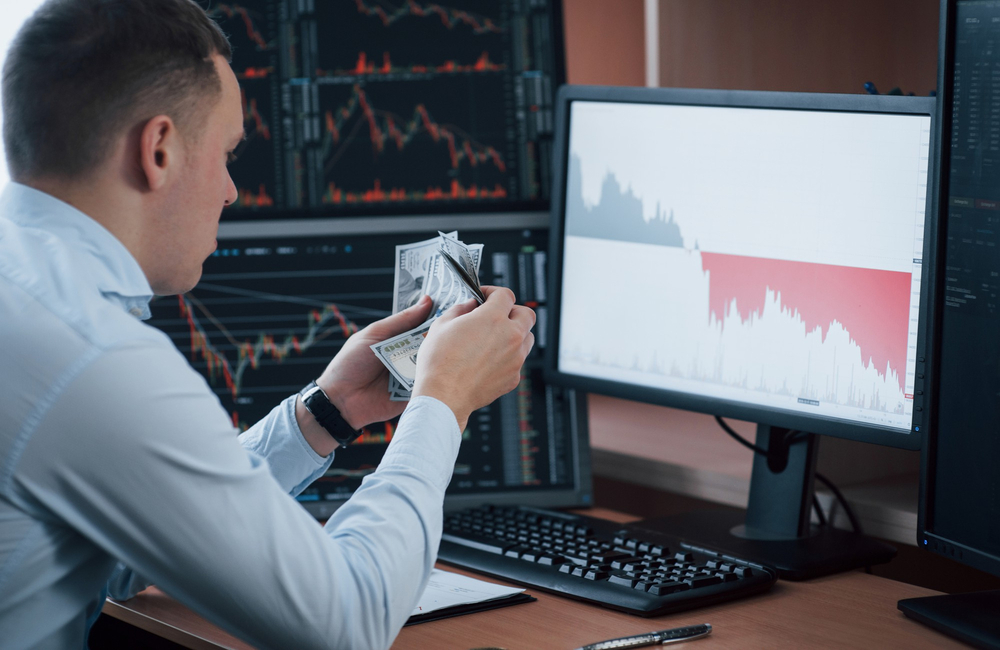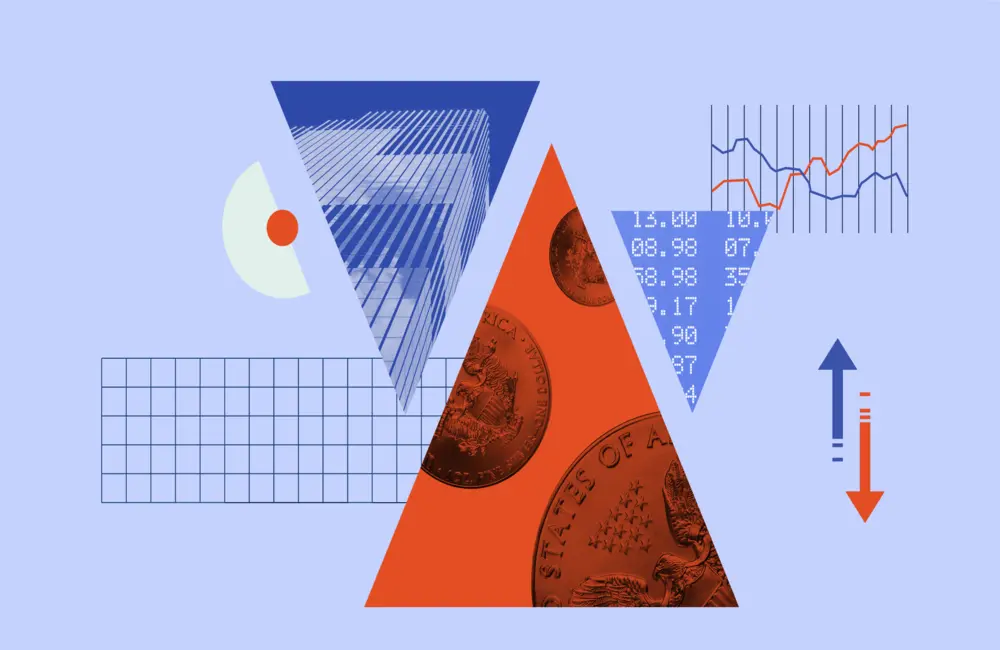At 8.00 am on Thursday, suggesting a lower start.
The three major US indexes turned lower on Wednesday after earlier gains. The S&P 500 fell 0.7% by the end of the day. The Dow Jones Industrial Average dropped 0.5 percent, and the technology-heavy Nasdaq Composite fell 0.7 percent.
An index of US manufacturing activity increased to 56.1 in May, up from 55.4 in April. Economists had expected a drop to 54.5, according to a Wall Street Journal survey. Any reading above 50 represents expansion.
The session on Wednesday begins a new trading month, but few investors expect any easing of the volatility that has gripped markets this year. Many traders remain concerned about the speed of the Federal Reserve’s interest-rate increases and whether they will send the US economy into a recession. Eight of the last 11 long Fed rate-rise cycles ultimately resulted in recession, Deutsche Bank analysts say.
“Most of the gains from last week have been a bear-market rally,” said Chris Wallis, the CEO and chief investment officer for Vaughan Nelson Investment Management. “I believe we will have long periods of volatility, but the bet is between June and September that we have a good chance to have a bottom in the market.”
The S&P/ASX 200 closed at 7234.0, up 0.3% locally as bank shares advanced and mining stocks weakened. The benchmark index plated a soft lead from US shares to open higher but needed a rally at the last after briefly slipping into negative territory.
Mid-session, data showed the economy was growing faster than anticipated in the March quarter.
Banks NAB, Westpac, ANZ and Commonwealth gained between 0.9% and 2.25%.
Lithium producers Liontown and Pilbara Minerals dropped 19 per cent and 22 per cent, respectively. Analysts at Goldman Sachs said in a note that they think the lithium bull market has ended. Gold stocks also fell.
In the commodity markets, Brent crude oil gained 0.6 per cent at US$116.29 a barrel. Iron ore was up US5 cents to US$136.55. Gold fell 0.5% to US$1839.50.
Local bond markets have sold off as appetite for risk diminished and the yield on Australian 2 Year government bonds rose to 2.49% and the 10 Year to 3.41%. The yield on US 2 year Treasury notes climbed to 2.64% overseas and the yield on US Treasury 10 year notes climbed to 3.06%.
The Australian dollar was at 71.72 US cents at 7.00am, lower than the previous close of 71.75 US cents. The Wall Street Journal Dollar Index, which measures the greenback against 16 other currencies, rose to 95.11.
Asia
Chinese stocks ended mixed, retreating from Tuesday’s gains on the back of news that Shanghai would further ease its Covid restrictions. The benchmark Shanghai Composite Index dipped 0.1% to close at 3182.16, while the Shenzhen Composite Index advanced 0.3% to 2012.65, and the ChiNext Price Index increased 1.0% to 2428.96.
“The auto sector from car manufacturers to components suppliers to after-sales services was the biggest gainer after a district in Shanghai launched cash-subsidy programs for car purchases, adding to the city-level stimulus announced over the weekend. But that momentum was tempered by declines among restaurant and hotel operators, which surrendered early-session reopening-fueled gains.
Hong Kong stocks fell, tracking their A-share peers who unwound gains from a day earlier after Shanghai announced further steps to reopen from its Covid-19 lockdown. The benchmark Hang Seng Index dipped 0.6% and closed at 21294.94. Medical firms were the biggest losers as CSPC Pharmaceutical declined 6.1% and Wuxi Biologics 2.0%. Consumer staples firms that topped the gainers overs division last session weighed on the market further. China Resources Beer shed 1.4% and Nongfu Spring dropped 1.1%.
Japanese shares finished up with auto and financial stocks among the top gainers as a weaker yen raised hopes for an earnings recovery. Nissan Motor rises 7.8% and Bank of Kyoto adds 4.9%. The Nikkei Stock Average climbs 0.7% to finish at 27457.89.
Europe
European markets dropped after encouraging economic data inflamed investor fears of US interest-rate increases. The pan-European Stoxx Europe 600 ended 1% lower in London, where the FTSE 100 fell 1%, and closed down 0.8% and 0.3% for the French CAC 40 and German DAX, respectively.
“European markets have struggled to get going at the start of the month, trying to push on to higher ground," Mr. Hewson wrote for CMC Markets. “But afternoon gains have melted away, with prices threatening to test lows of the day, after a stronger than expected ISM manufacturing report weighed on expectations for a pause to the US rate-hiking cycle in September.”
North America
US stock indexes fell on the first day of June weekend, following an erratic trading month.
All three U.S. stock indexes surrendered early gains. The S&P 500 lost 0.7%. The Dow Jones Industrial Average dropped 0.5 percent and the technology-focused Nasdaq Composite was off 0.7 percent.
Major US indexes fell Tuesday, and the S&P 500 ended May nearly flat after a month defined by massive swings both ways.
The session on Wednesday marks the start of a new trading month, but few investors are expecting relief from volatility that has taken over markets this year. Many traders are still concerned that the Federal Reserve’s aggressive pace of interest-rate increases will tip the US economy into a recession. Eight of the past 11 extended Fed rate-rise cycles have ultimately ended in recession, Deutsche Bank analysts note.
Many traders, however, still say that a recession isn’t assured, and that any substantial economic slowdown in the United States could be months off. That has prompted some investors to step into the market and scoop up beaten-down shares available at lower valuations, injecting additional volatility into markets.
Many investors and strategists say they’re still grappling with whether last week’s rally when all three major US indexes surged at least 6% was the beginning of a more sustainable rebound or just a brief respite from a year of selling pressure.
“The majority of what we saw last week has been a bear-market rally,” said Chris Wallis, the chief executive and chief investment officer for Vaughan Nelson Investment Management. “There’s a decent chance for a bottom in the market probably sometime between June and September,” he said. “I think we will have extended volatility.”
Mr. Wallis does not dismiss the risk of a recession this year, driven by a global growth slowdown and an inflation surge.
Dave Sekera, chief US equity strategist, began the year with a bullish position on value shares, but now thinks growth stocks, which have been battered this year, are underpriced. The Russell 1000 Value Index has fallen 6 percent this year, while the Russell 1000 Growth Index has dropped 23 percent.
“The market is often like a pendulum. We feel like it swings too far one way or the other sometimes,” he said.
Recent clear signalling from the Fed of the need for half-percentage-point increases to interest rates at the Fed’s June and July policy meetings has provided traders with reassurance. What comes next, however, is less certain. The central bank of Canada raised its policy interest rate by a half-percentage point on Wednesday.
“The question we have to ask ourselves is, ‘is this a one-month thing or a six-month thing,” said Viraj Patel, global macro strategist for Vanda Research. He’s looking for US stocks to grind higher over the next couple of weeks, barring a material data shock, but he doesn’t yet think stocks are on a path to a more sustained rally.
More thinly staffed trading desks during summer months could also stir up volatility in the coming weeks. One theory is that summer trading is typically characterized by lower trading volumes and lower liquidity, resulting in more extreme moves in stocks. Several investors also are preparing for further turbulence ahead in other asset classes, where they too have seen large swings this year.
In economic data, US manufacturing activity improved, with the Institute for Supply Management’s index rising to 56.1 in May from 55.4 in April. Economists surveyed by The Wall Street Journal had forecast a decline to 54.5. Any reading above 50 indicates expansion.
US hiring demand stays robust as Americans kept quitting jobs at a high level. The Labor Department on Wednesday reported that seasonally adjusted job openings dropped to 11.4 million in April from an upwardly revised 11.9 million in March. This tight jobs market has pushed wages up and helped drive historically high inflation.
As increasingly scrutinized economic data on inflation and gross domestic product is released over the next few months, the market could settle down and separate itself from days of whipsawed trading sessions.
“I do think the back half of the year can be better than the front half because we’re going to have more of that information,” said Liz Young, head of investment strategy at SoFi.
The yield on the 10-year US Treasury note rose to 2.930%, from 2.842% Tuesday. Yields and bond prices move in opposite directions. Yields on the benchmark note are still well below this year’s closing high of 3.124 percent but have risen this week as traders have continued to re-evaluate the path of interest rates.
Crude prices climbed after European Union leaders agreed on plans to impose an oil embargo on Russia and a ban on insuring ships carrying Russian oil, leaving investors to digest the impact of those measures. Some OPEC countries are also contemplating suspending Russia’s participation in an oil-production agreement.
Brent crude, the global oil benchmark, increased 0.6 percent to $116.29 a barrel. Oil prices have come off the highs they touched in the days after the war started in Ukraine but have started to creep higher in recent days, with traders absorbing plans by European Union leaders and Covid-19 restrictions being eased in China.
“Oil prices have taken us on a roller-coaster ride and I think the chances are they will remain elevated,” said Susannah Streeter, senior investment and markets analyst at Hargreaves Lansdown. “I’m still quite bullish on oil and high energy costs in general being an inflationary factor weighing on the markets.”
Salesforce jumped $15.83, or 9.9 percent, to $176.07 after the company said revenue beat analysts’ expectations, alleviating questions about demand for its business software. The stock was Wednesday’s best performer in both the Dow and S&P, according to Dow Jones Market Data. Victoria's Secret stock gained $3.68, or 8.9 percent, to $44.89 after posting a profit that beat analysts’ estimates.
Shares of energy companies vacillated between gains and losses in choppy intraday trading. Occidental Petroleum added $1.11, or 1.6 percent, to $70.42.























